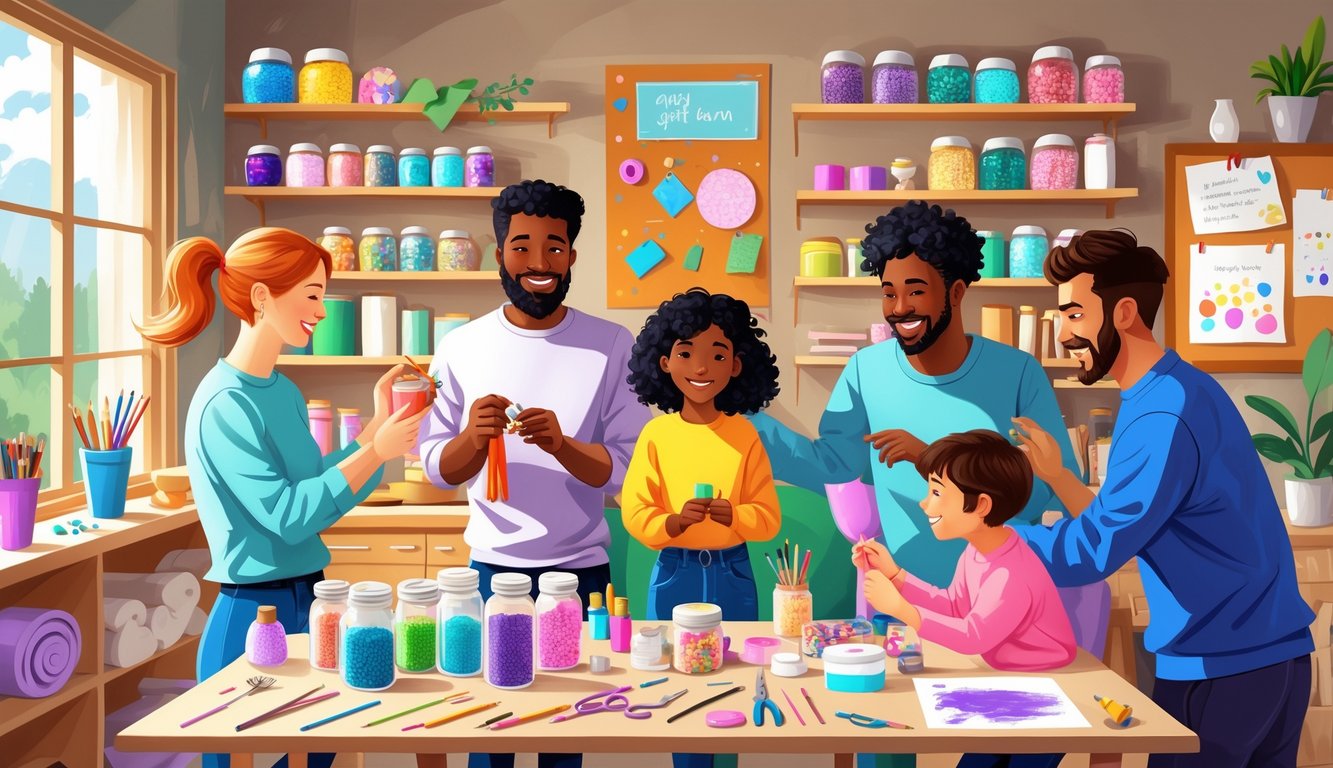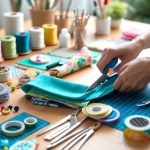
Planning and Promoting Future Swaps
Last week, someone tossed a box of unopened yarn at my door and figured I’d know what to do with it. Nope. If you want swaps to actually work, timing and visibility are everything. Hype the event or nobody shows. Herding strangers into a swap nearly broke my spring calendar. It’s chaos, but it’s worth it.
Using Social Media and Flyers
Honestly, does anyone actually believe a Facebook group magically summons a crowd? I keep seeing that advice. Wildly optimistic. I’ve blasted posts all over Instagram, Facebook, whatever, and it’s a total toss-up—three RSVPs, fifty, or just the echo of my own voice. People love free stuff, though. I once offered a craft kit if you tagged a friend, and suddenly my DMs blew up, but only because I remembered hashtags and, for some reason, mentioned an upcoming holiday. DMing my washi tape-hoarding friends? Way better, but then someone whines about too many notifications. Can’t win.
Flyers. Ugh. I hate them, but three families on my street didn’t even know about my event until I shoved neon paper in their mailboxes. Printing costs? Ridiculous. I scurried to the library copy machine and drew the world’s ugliest scissors after Canva locked me out. How many flyers do you need? No clue. I just sneak them into Michaels and the post office and hope for the best. Someone will always complain about tacky tape or, I don’t know, missing event times. Typos get more attention than the actual date. Why is that?
Collaborating with Crafting Groups
Cold-emailing the local scrapbooking club is awkward. Sometimes they reply, sometimes it’s weeks of silence, then suddenly I’m drowning in color-coded spreadsheets and weirdly strict swap rules. One person from the Polymer Clay Society told me half their crew shows up just for new molds—nobody cares about felt, apparently. I try cross-posting in Discord servers and that uptight quilting newsletter, and yeah, it always sounds formal, but if I toss in real stats like “40 pounds of supplies swapped,” people notice. Or pretend to.
Occasionally a club freaks out, worried their regulars will get nothing. I started handing out colored wristbands—bring more, trade more. It’s silly, but it works. My Etsy friend swears she got six new customers from just chatting at a swap table. Maybe people just want cookies at the end. Who knows.
Organizing a Spring Swap Event
I’m still losing my mind trying to pick a date—spring is a scheduling nightmare. March? People moan about Easter. April? Rains ruin parking. I always say late April, indoors, Saturday, but good luck booking the community center. Feels like prepping for a pop-up shop: folding tables, signs, price tags (not for actual money, just “take or trade”), and hand sanitizer I stole from last year’s teacher gifts.
Lists are great if you actually share them everywhere—make a wish list, dump it in a Google Doc, spam your group. Ignore anyone who says “let’s just be flexible with RSVPs.” No, you need numbers or your table will collapse under twenty bins of beads. Learned that the hard way when a retired art teacher brought her entire classroom’s expired glue. Half exploded. Ban stuff specifically or you’ll get it.
Oh, and the Swap Planning Kit I downloaded? It went on about “gifting to your community.” I’d be happy if nobody trips over spilled glitter.
Frequently Asked Questions
How is it possible to have three boxes of metallic washi tape and still never find a glue stick? Every crafter has that story—panic at the last minute, deadline looming, and salvation comes from a swap. Some guy traded five bags of pompoms for one roll of heat-resistant tape. I still laugh about that.
How do I find local craft supply swap events in my area?
Honestly, scrolling Facebook Groups is soul-crushing, but sometimes I hear about swaps in the weirdest ways. My dentist (!) once mentioned a church basement swap nobody advertises but it’s always packed. Craft store bulletin boards, random Reddit threads, the back of those free city newspapers—something usually turns up.
I swear I’ve checked every calendar, but then I’ll find organized craft supply swap events hidden in the library’s schedule, mixed in with book clubs and beginner French. Instagram hashtags sometimes work, if you can wade through all the yoga and birthday parties.
What are the best practices for participating in a craft swap library?
Don’t show up with two half-used glues and a crusty brush. I did. Felt like a total amateur. At one swap, I started labeling baggies with project ideas—“great for bottle cap necklaces!”—because apparently people need help imagining things. Some libraries log every item. I met a volunteer who color-codes everything. She claims it halves the chaos.
You’ll see people quietly hoarding fancy resin molds, ignoring the donation table. It’s obvious when someone leaves with the exact same set every month. Read the signs, bring clean, usable stuff (I know, sounds obvious), and don’t get attached to what you bring. It’s gone.
Can you suggest some creative craft exchange ideas for our next meeting?
People never shut up about “Mystery Material” swaps. I did one: everyone brought something weird—faux leather fringe, glow-in-the-dark paint, expired keychains. Nobody figured out the glitter-encased sand dollars, but it was hilarious.
If you’re desperate, try a “theme night”—only trade certain colors—or go wild with a mixed-medium challenge like in this craft swap party guide. But if anyone suggests “googly eyes and twine only,” run. That bag is bottomless.
What’s new in the craft swap scene for 2025?
Apparently, “swaps with a twist” are the hot thing—pre-packaged handmade kits, instructions and all. These are everywhere now. Message boards exploded about quarterly meet-ups tied to whatever’s trending. I’m guessing resin coaster kits are this year’s fidget spinner.
I saw a pop-up where you had to finish a “mystery challenge” before you could grab anything. More game show than swap, honestly. Some groups are mixing craft supplies with DIY gift exchange party ideas. People end up gifting half-finished macramé to strangers. Weird times.
Are there any specific rules or etiquette I should follow at an art supply exchange?
Nobody’s checking expiration dates on ink pads unless someone starts sniffing the table, but there are rules. If you take more than you give, people notice—especially at “one-for-one” swaps, where suddenly everyone’s a math genius.
Swaps that say “only unopened kits” or “no broken tools” get fewer complaints. The best ones have a volunteer by the sticky dots, just watching. I’ve seen people get called out for swapping half-empty glitter jars with dried clumps. Don’t be that person.
How can I ensure a fair and enjoyable experience when swapping crafting materials?
Honestly, who actually trusts a craft swap to run itself? Set some ground rules or just prepare for chaos—seriously, I’ve watched someone try to pass off individual pop-up greeting cards like they’re rare gems, and then snag a full set of fancy stamping tools in return. No one called them out, but the group chat? Total meltdown.
Tickets, color-coded tags, whatever—just something so the expensive stuff doesn’t vanish in the first ten seconds. I mean, does anyone really think foam stickers should be worth as much as a brand-new embroidery kit? Please. I’ve considered showing up with a calculator and just doing the math out loud. Also, I still can’t find my rotary cutter, which I’m pretty sure walked off at the last swap—maybe a sign-in sheet would help, but who’s actually gonna enforce it?



